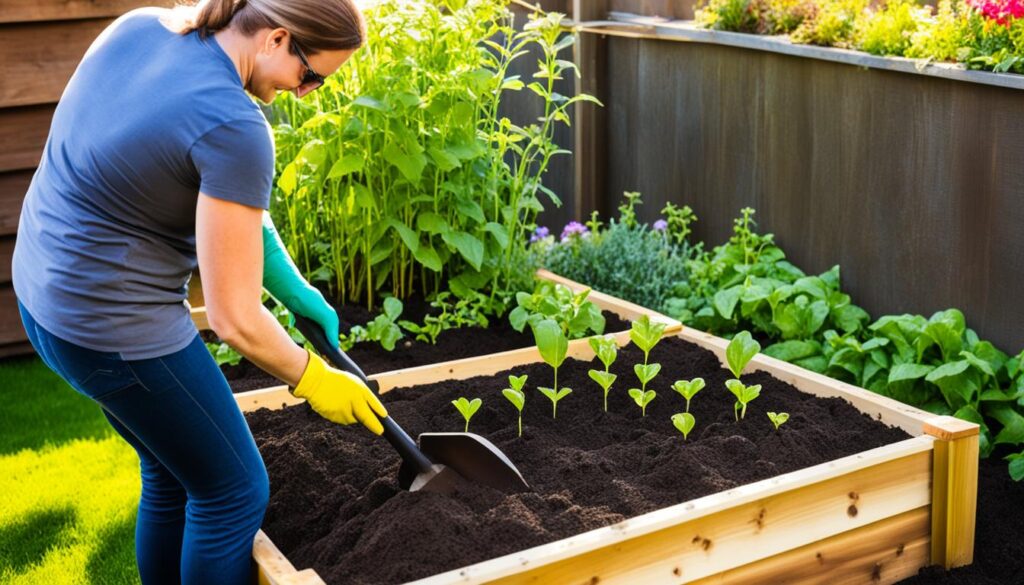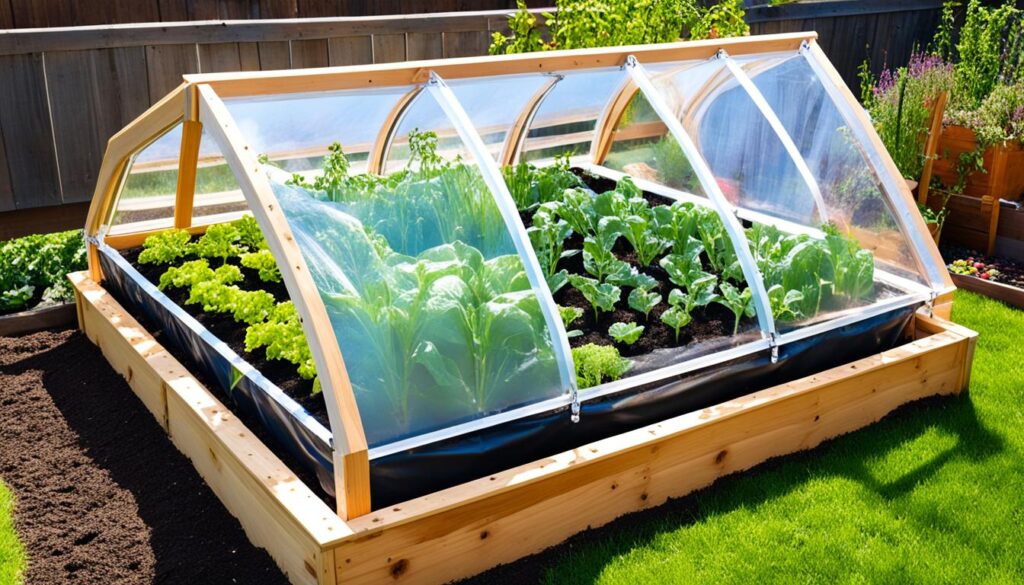Phlox not flowering can be a frustrating issue for gardeners. In this article, I will explore the reasons behind phlox not blooming and offer helpful solutions to encourage the production of beautiful flowers. By understanding the common causes and implementing the proper care techniques, you can successfully get your phlox to bloom.
Phlox plants not producing flowers can be attributed to various factors. Insufficient sunlight, competition from other plants, lack of necessary nutrients, over-fertilization with nitrogen, and improper pruning are some of the common reasons for phlox not blooming. Addressing these factors is key to unlocking the full blooming potential of your phlox plants.
Key Takeaways:
- Insufficient sunlight, competition from other plants, lack of nutrients, over-fertilization, and improper pruning can hinder phlox from blooming.
- Relocate phlox to a sunnier spot, trim shade-casting structures or trees, and divide crowded plants to ensure optimal growing conditions.
- Provide phlox with organic compost to address nutrient deficiencies and avoid excessive nitrogen fertilization for balanced growth.
- Avoid pruning phlox during early to mid-summer to preserve flower buds and encourage blooming.
- Maintain regular care practices, such as fertilization, sunlight monitoring, and proper pruning, to prevent future blooming issues.
Possible Reasons for Lack of Blooming
When it comes to phlox plants not blooming, there can be several factors at play. Understanding these reasons can help you address the issues and get your phlox to produce those beautiful blooms you desire. Here are some common reasons why phlox may not be flowering:
- Insufficient sunlight: Phlox plants require plenty of sunlight to thrive and produce flowers. If your phlox is not receiving at least six hours of full sun each day, it might not bloom properly. Consider relocating the plant to a sunnier spot in your garden or trimming nearby structures or trees that are shading the phlox.
- Competition for resources: Overcrowding can hinder phlox from blooming. If your phlox is surrounded by other plants that are competing for nutrients, water, and space, it may struggle to produce flowers. Dividing overcrowded plants every few years can help alleviate this issue and promote healthy blooming.
- Lack of necessary nutrients: Phlox plants rely on essential nutrients to support flower production. If your soil lacks these nutrients, your phlox may not bloom as expected. Adding organic compost to the soil in spring or fall can help provide the necessary nutrients and improve soil quality.
- Over-fertilization with nitrogen: While fertilizing is important for plant growth, overdoing it with nitrogen can lead to excessive vegetative growth at the expense of flowers. If you’ve been heavily fertilizing your phlox plants with nitrogen, it could explain why they aren’t blooming. Adjusting your fertilizer regimen and using a balanced formula can help promote flower production.
- Improper pruning: Pruning phlox at the wrong time or in the wrong way can hinder blooming. Avoid pruning phlox in early to mid-summer, as this can remove flower buds and prevent blooming. Proper pruning techniques include cutting back creeping phlox if it becomes too spread out or trimming tall phlox that have been damaged by animals.
By addressing these factors and providing the proper care, you can overcome the obstacles that are preventing your phlox from blooming and enjoy a vibrant display of flowers in your garden. If you’re still having trouble, further troubleshooting may be necessary to identify any other issues affecting your phlox’s blooming potential.
Insufficient Sunlight
One of the common reasons why your phlox may not be blooming is due to insufficient sunlight. Phlox plants require at least 6 hours of full sun to thrive and produce beautiful flowers. If your phlox is not receiving enough sunlight, it may not be able to bloom properly.
To address this issue, you can consider relocating the plant to a sunnier spot in your garden. Look for an area that receives more direct sunlight throughout the day. Alternatively, if nearby structures or trees are casting shade on your phlox, you can trim them to allow more sunlight to reach the plant.
An important factor to consider is the specific lighting needs of your phlox variety. Some phlox cultivars are more tolerant of shade, while others require more direct sunlight. Make sure to choose the right location based on the specific requirements of your phlox plants.
By ensuring that your phlox receives sufficient sunlight, you can help stimulate blooming and enjoy a vibrant and colourful display in your garden.

Competition from Other Plants
When it comes to phlox plants, competition from other plants can hinder their blooming potential. Overcrowded phlox may struggle to access the necessary resources needed to produce flowers. To combat this issue, it’s important to make sure each phlox plant has enough space to grow and thrive.
One effective method to alleviate overcrowding and stimulate healthy blooming is by dividing the phlox plants every few years. Dividing the plants not only gives them more room to spread out, but it also promotes the development of strong, vibrant blooms.
During the dividing process, carefully dig up the existing phlox clumps and separate them into smaller sections. Make sure each section has a healthy root system attached. Replant the divided phlox in separate areas of your garden, ensuring they have enough space to flourish on their own.
By providing ample space for each phlox plant and reducing competition from other plants, you can help them thrive and enhance their blooming capabilities.
Next, let’s explore another factor that can contribute to phlox not blooming: insufficient nutrients.
Lack of Nutrients
If your phlox plants are not blooming, it could be due to a lack of essential nutrients. Phlox plants benefit from the addition of organic compost, which provides the necessary nutrients and improves the overall quality of the soil.
Adding compost to the soil in spring or fall can help address this issue and support flower production in your phlox plants. Compost is rich in organic matter, which releases nutrients slowly over time, providing a sustainable source of nourishment for your plants.

When adding compost to your phlox plants, ensure that it is well-matured and free from any weed seeds or diseases. Spread a layer of compost around the base of the plant, extending it to the dripline, which is the outermost circumference of the plant’s foliage.
As rain or irrigation waters the soil, the nutrients from the compost will gradually penetrate the root zone, providing your phlox plants with the necessary nourishment they need to bloom.
Additionally, compost improves the soil structure by enhancing its ability to retain moisture and drain excess water. It also aids in the development of beneficial soil microorganisms, creating a healthy and thriving environment for your phlox plants.
By incorporating compost into your phlox garden, you can ensure that your plants receive the essential nutrients they require for proper growth and abundant blooming.
Over-Fertilization with Nitrogen
Excessive nitrogen fertilization can lead to the overgrowth of vegetation at the expense of flower production in phlox plants. If you’ve been using a heavy nitrogen fertilizer on your phlox and notice that they are not blooming as expected, this may be the underlying cause.
To rectify the issue and encourage flower production, it is important to adjust your fertilizer regimen. Instead of focusing solely on nitrogen-rich fertilizers, consider switching to a balanced formula that provides the necessary nutrients for overall plant health. This will promote a more balanced growth, ensuring that your phlox plants allocate energy not just to foliage but to flower production as well.
By responsibly managing your fertilizer usage and avoiding excessive nitrogen applications, you can strike the right balance and avoid the problem of excessive vegetative growth. This will allow your phlox plants to channel their energy into blooming, resulting in an abundance of beautiful flowers.
Improper Pruning
Pruning plays a crucial role in maintaining the health and appearance of our plants. However, improper pruning techniques can have negative effects, including inhibiting the blooming of phlox plants. It is important to understand the right time and method for pruning to ensure the optimal growth and flowering of your phlox.
When it comes to phlox, one common mistake is pruning at the wrong time, specifically during early to mid-summer. Pruning phlox plants at this time can remove flower buds and hinder blooming. To encourage blooming, it is best to avoid pruning during this period, allowing the phlox to develop and showcase its vibrant flowers.
Proper pruning techniques for different types of phlox can vary. For creeping phlox that tend to spread out, cutting back excessive growth can help maintain its compact shape and promote blooming. On the other hand, tall phlox may require cutting back damaged or diseased stems to encourage new growth and healthy blooming.
Remember, timing is crucial when it comes to pruning phlox, ensuring that you do not disrupt the blooming cycle. By following the correct pruning practices, you can support the overall health of your phlox plants and enjoy their beautiful blooms.

How to Encourage More Blooms
To encourage more blooms in your phlox plants, I recommend providing them with optimal growing conditions. Here are some effective strategies to promote phlox flower production:
1. Plant in Full Sun
Phlox plants thrive in full sun, so it’s crucial to choose a location with maximum sunlight exposure. This allows the plants to photosynthesize efficiently and encourages robust blooming. Ensure that your phlox plants receive at least 6 hours of direct sunlight each day.
2. Ensure Good Airflow
Good airflow around phlox plants is essential for preventing diseases and encouraging healthy growth. Be mindful of nearby structures or dense vegetation that may impede airflow. Prune or trim any obstacles that could block air circulation around the plants.
3. Fertilize Annually
Fertilization plays a vital role in promoting flower production in phlox plants. Apply a balanced fertilizer, such as a 10-10-10 or 20-20-20 formula, annually in early spring or as recommended by the fertilizer’s instructions. Additionally, if you notice a decrease in blooming, consider fertilizing throughout the growing season to provide the necessary nutrients.
4. Divide Overcrowded Plants
When phlox plants become too crowded, they may fail to produce an abundance of blooms. Dividing the plants every three to four years helps alleviate overcrowding, rejuvenates the plants, and promotes better blooming. Carefully dig up the clumps and separate them into smaller sections, replanting them in well-prepared soil.
5. Avoid Pot-Bound Container Plants
If you’re growing phlox in containers, ensure they have enough space for root development. Over time, the plants may become pot-bound, with their roots tightly packed and restricted. Repotting container-grown phlox every two to three years helps prevent root congestion and encourages vigorous blooming.
By implementing these strategies, you can create favorable conditions for your phlox plants, encouraging more blooms and enjoying a vibrant and beautiful garden.
Prevention and Maintenance Tips
To ensure your phlox plants continue to produce beautiful blooms, it is crucial to maintain proper care practices. By consistently providing the necessary care, you can prevent your phlox from not blooming in the future. Here are some essential tips to help you maintain healthy and flourishing phlox:
Regular Fertilization
Fertilizing your phlox plants on a regular basis is vital for their overall health and flower production. Use a balanced fertilizer specifically formulated for flowering plants, following the package instructions. Applying fertilizers during the growing season, typically in spring and early summer, can provide the necessary nutrients to support blooming.
Monitoring Sunlight Exposure
Phlox plants thrive in full sun conditions. It is important to monitor their sunlight exposure and ensure they receive at least 6 hours of direct sunlight each day. Adequate sunlight promotes strong growth and encourages abundant flower production. If your phlox plants are not getting enough sunlight, consider relocating them to a sunnier spot in your garden.
Dividing Overcrowded Plants
Crowded phlox plants may struggle to bloom as they compete for resources such as water, nutrients, and sunlight. To prevent overcrowding and promote blooming, divide your phlox plants every few years. By carefully digging up the plant and separating it into smaller clumps, you can provide each individual plant with enough space to grow and thrive.
Avoiding Excessive Pruning
While pruning is essential for maintaining the shape and health of your phlox plants, excessive pruning can hinder blooming. It is best to avoid pruning your phlox during early to mid-summer when they are forming flower buds. Instead, focus on removing any damaged or dead stems and selectively prune to maintain a balanced and robust plant structure.
Image: Phlox Care Tips
Remember, proper and consistent care is key to preventing your phlox plants from not blooming. By following these maintenance tips, you can create an optimal environment for your phlox to thrive and delight you with their vibrant and fragrant blooms.
Troubleshooting Common Issues
If your phlox plants are still not blooming despite addressing the common causes, it may be necessary to troubleshoot further. Here are some possible solutions for your phlox not flowering:
1. Test the Soil for Nutrient Deficiencies
Phlox plants require adequate nutrients to produce vibrant blooms. If your phlox is not blooming, it could be due to nutrient deficiencies in the soil. Testing the soil can help identify any deficiencies and guide you in providing the necessary amendments. Consider using a balanced, slow-release fertilizer to ensure your phlox gets the nutrients it needs.
2. Inspect for Pests or Diseases
Pests or diseases can impact the health and blooming of your phlox plants. Common culprits include aphids, spider mites, and powdery mildew. Regularly inspect your plants for signs of infestation or disease, such as distorted foliage, webbing, or powdery white spots. If detected, treat the affected plants promptly with appropriate insecticides or fungicides to prevent further damage and encourage blooming.
3. Consider Incompatible Growing Conditions
Phlox plants have specific requirements for optimal growth and flowering. Consider if the current growing conditions, such as excessive heat, poor soil drainage, or inappropriate pH levels, might be hindering blooming. Adjusting the conditions, such as providing shade during hot periods or improving soil drainage, can help promote blooming in your phlox plants.
If troubleshooting these common issues doesn’t resolve the problem, it may be necessary to seek further assistance from a local gardening expert or extension service. By identifying and resolving the underlying issues, you can help your phlox regain its blooming potential and enjoy a garden filled with beautiful flowers.
Moving Phlox to a Different Location
If you’ve tried everything and your phlox plants still aren’t blooming, it may be worth considering a change of location. Sometimes, certain plants simply don’t thrive in their current surroundings, and moving them to a different spot can make all the difference.
Experimenting with different locations in your garden allows you to find the perfect spot where your phlox can thrive and produce beautiful blooms. Take the time to observe and assess the sunlight exposure, soil conditions, and surrounding plants. By finding the optimal conditions, you’ll encourage your phlox to flourish.
Additional Resources
If you’re looking for additional resources on phlox care and more information on growing phlox, here are some helpful sources:
– The Royal Horticultural Society (RHS) website offers a wealth of knowledge on phlox cultivation and care. Visit their website at www.rhs.org.uk
– Gardening Know How is another great online resource that provides in-depth articles and tips on growing various plants, including phlox. Explore their website at www.gardeningknowhow.com
– The American Phlox Society is a dedicated organization that focuses on phlox cultivars and their care. Although based in the United States, their expertise and resources can be beneficial to phlox enthusiasts worldwide. Check out their website at www.americanphloxsociety.org
These additional resources will provide you with valuable insights into phlox care techniques, troubleshooting tips, and further guidance to help you achieve blooming success in your garden.








